RARE! WWII 823rd Bomb Squadron 38th Bomb Group B-25 Aerial Raid "Southeastern Korea" Mission Photograph
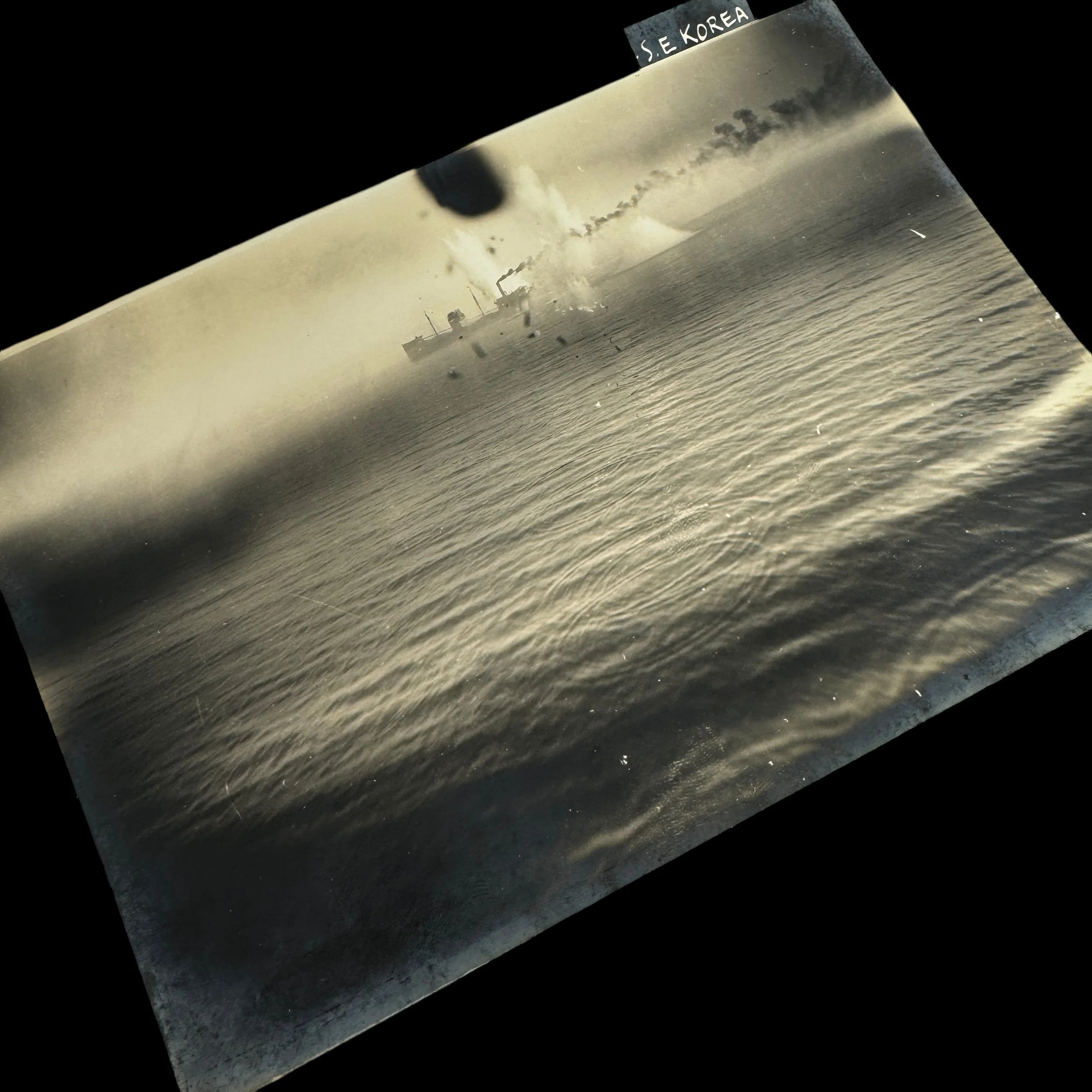
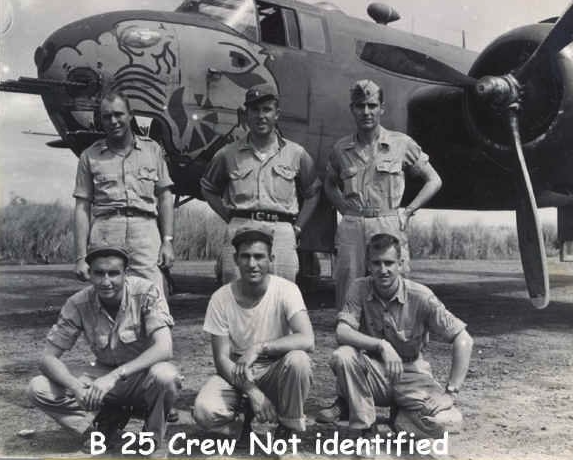


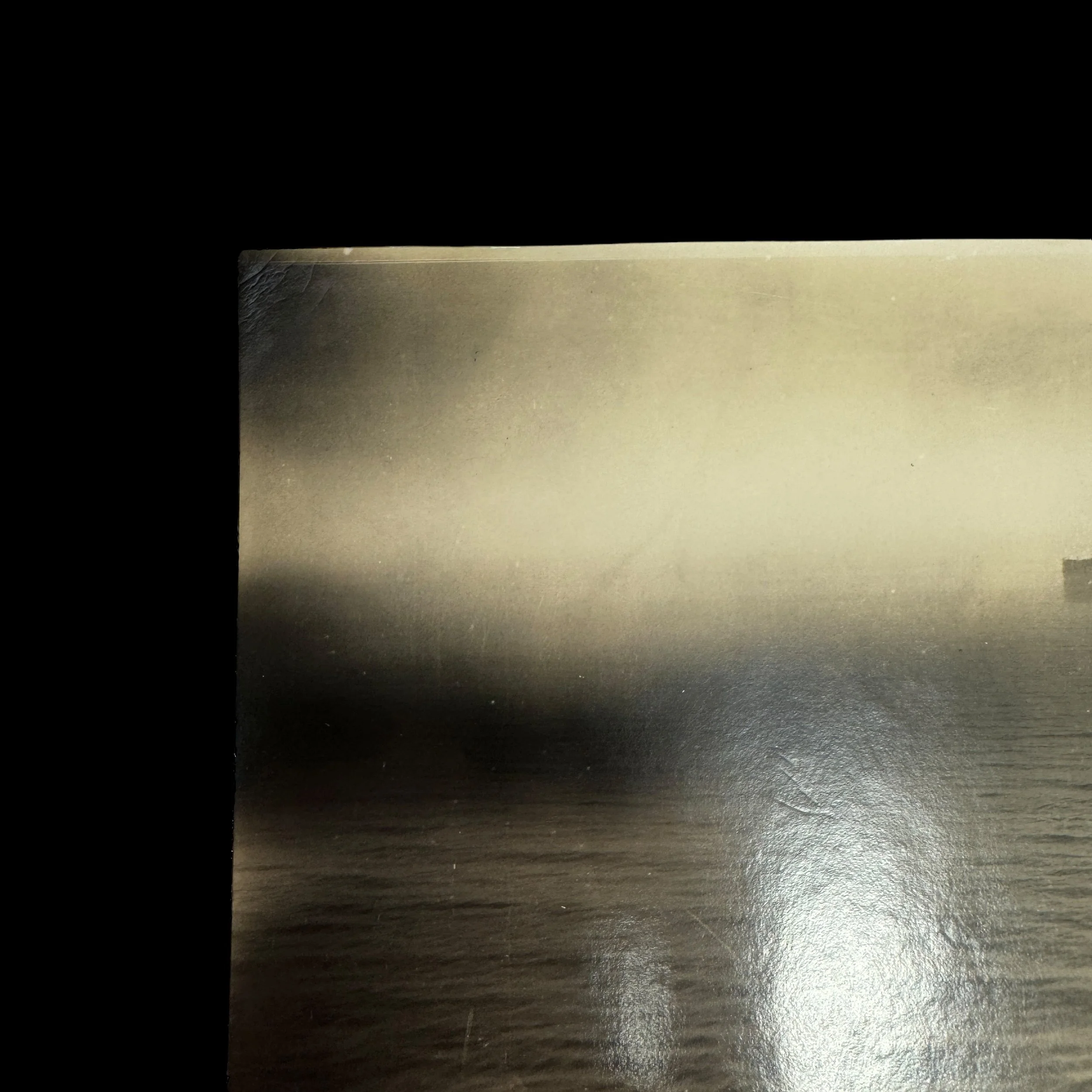
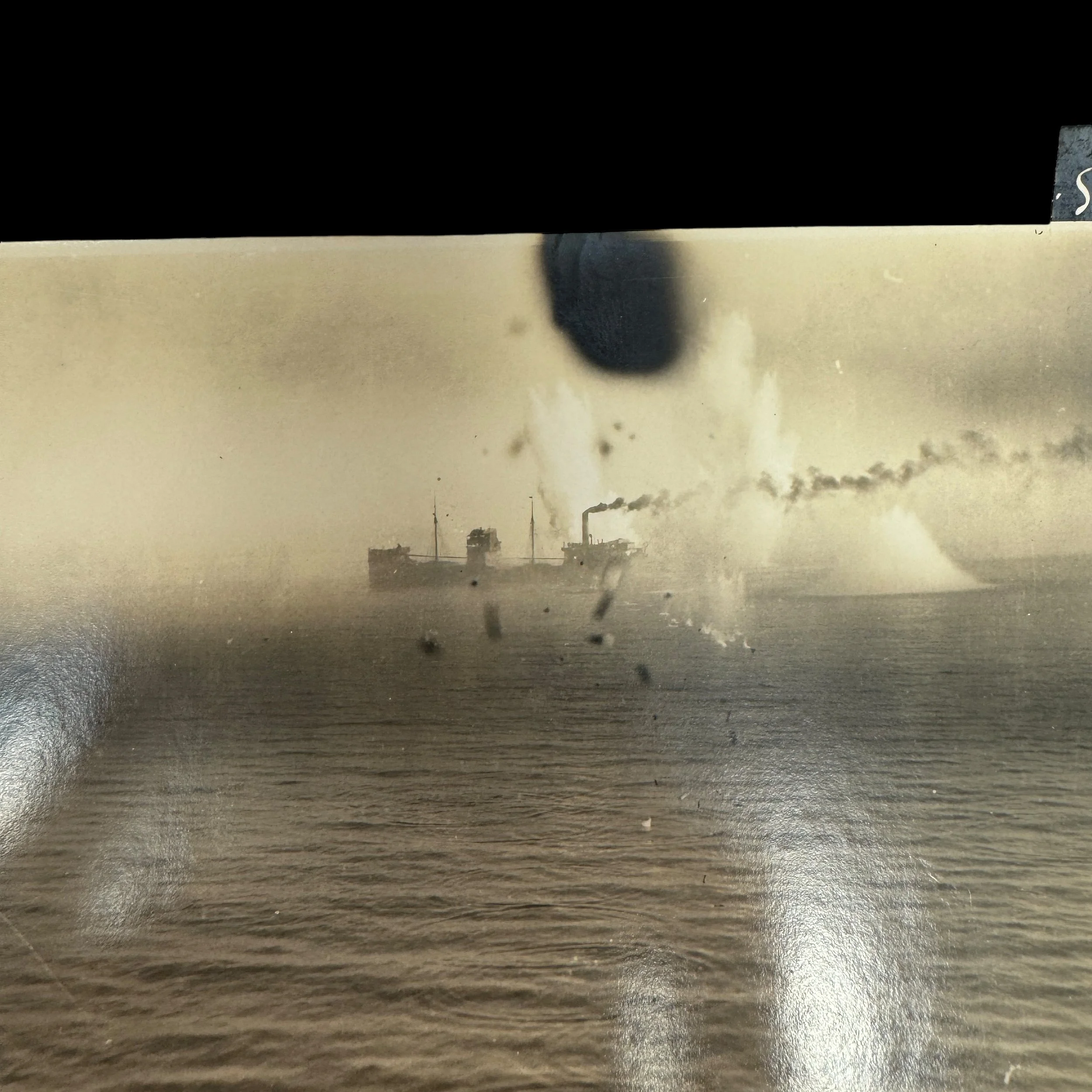
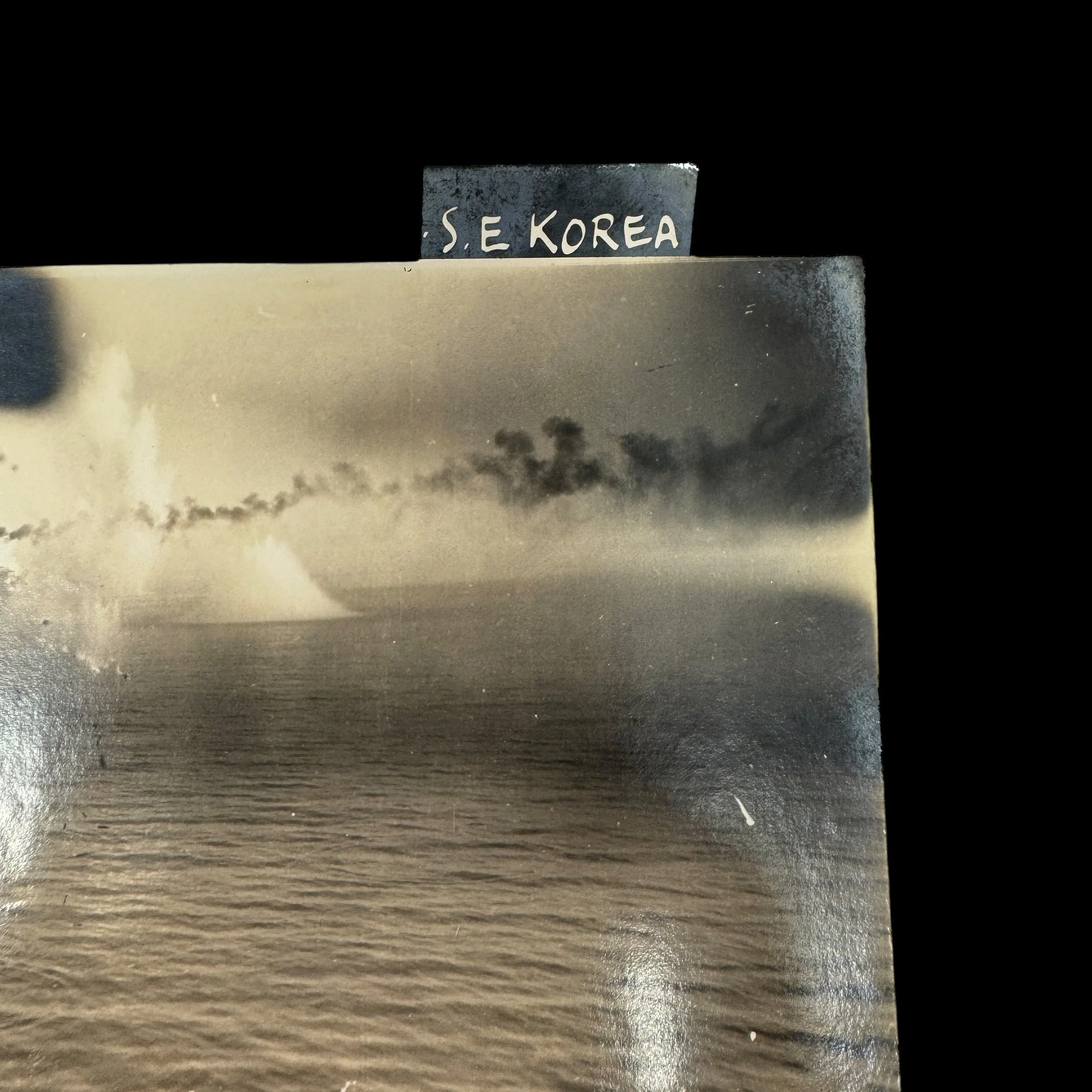
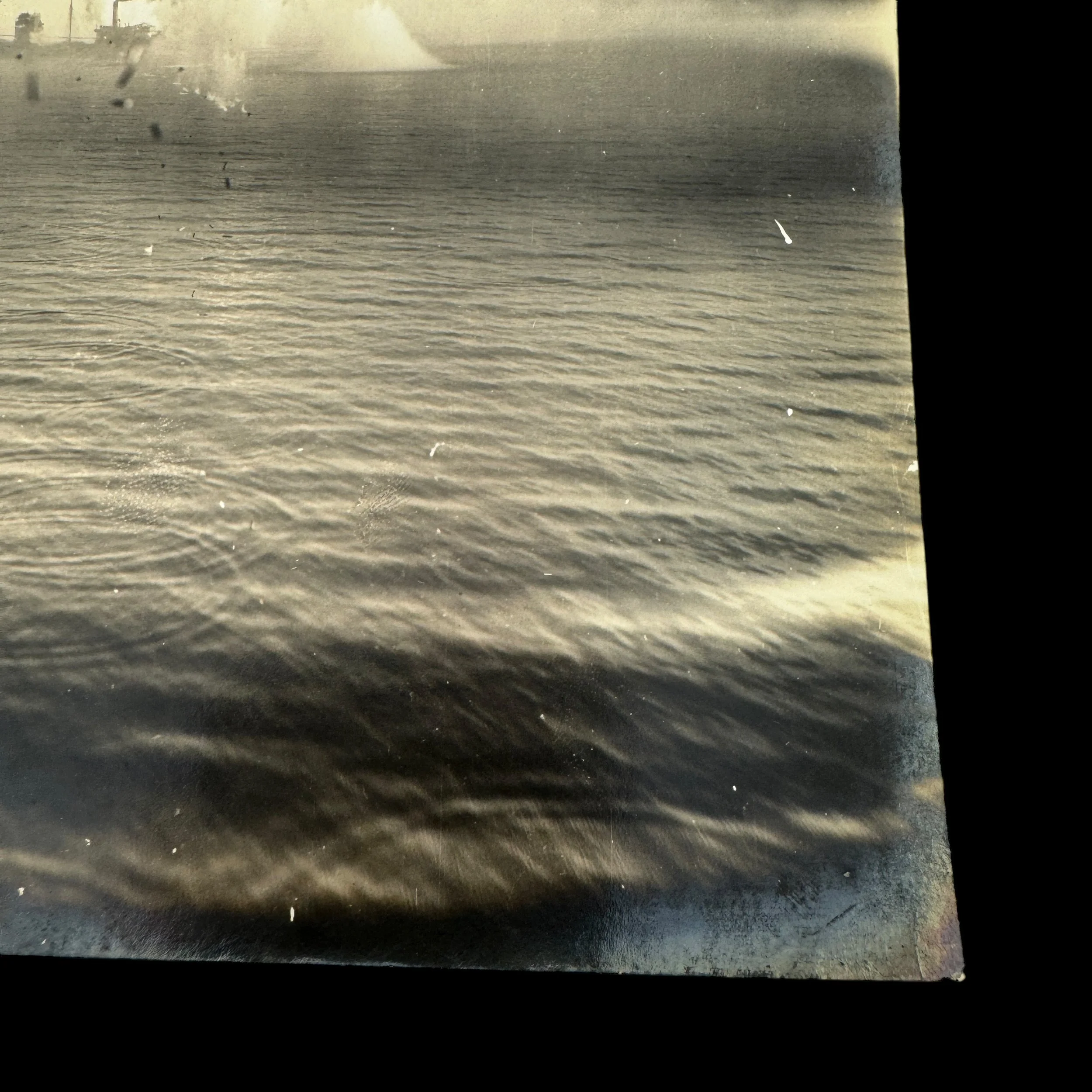
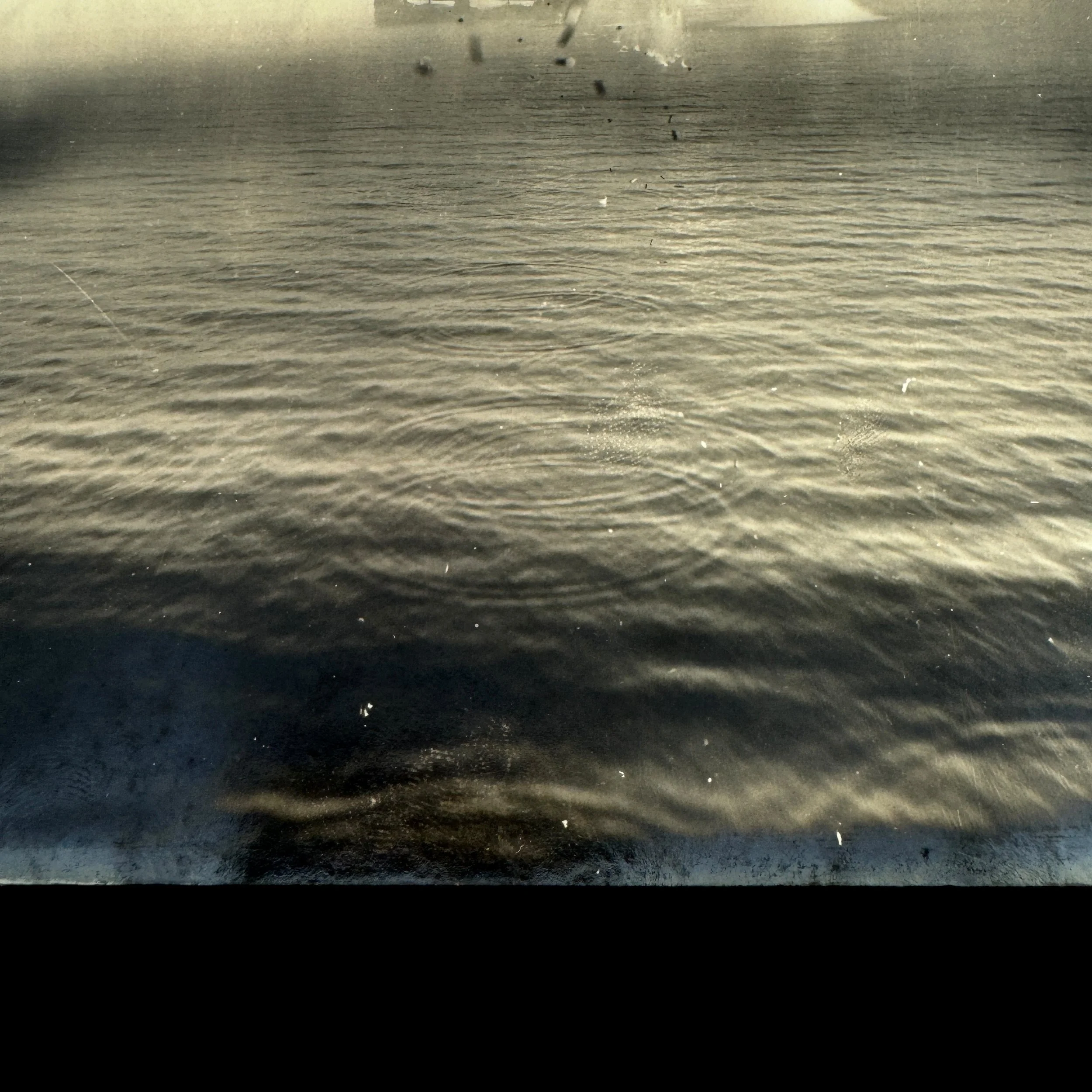

RARE! WWII 823rd Bomb Squadron 38th Bomb Group B-25 Aerial Raid "Southeastern Korea" Mission Photograph
Comes with a hand-signed C.O.A.
*Please note that we have researched the B-25 aircraft and crew from which his mission photograph was taken. From our research we have uncovered that this B-25 aircraft was a part of the 38th Bomb Group -823rd Bomb Squadron, however, we have not been able to identify the name of the B-25 aircraft or its crew. We included a "digital image" of the B-25 aircraft and its crew on the second image of the listing. This would make a great research piece!
Size: 5 x 6.5 inches
This incredibly rare and museum-grade artifact is an original World War II 823rd Bomb Squadron - 38th Bomb Group B-25 aerial reconnaissance mission photograph. These low-altitude mission raid photographs were extremely dangerous to take and were shot for intelligence and post-mission damage briefings. These B-25 mission photographs were developed and printed at the 823rd Bomb Squadron - 38th Bomb Group Air Force base in the Pacific Theater immediately following the squadron's mission. Depending on the sensitivity and secrecy of these missions or areas they would often be marked RESTRICTED, CONFIDENTIAL, SECRET, or TOP SECRET.
Mission - Southeastern Korea:
The 823rd Bomb Squadron of the 38th Bomb Group executed a daring B-25 Mitchell aerial raid on targets in southeastern Korea during World War II, striking key Japanese military installations and supply routes. As Korea was under Japanese occupation, the region housed crucial infrastructure supporting Japan’s war efforts in the Pacific. The B-25 bombers conducted low-level bombing runs and strafing attacks, focusing on railways, ammunition depots, and communication hubs that were essential to Japanese logistical operations. Despite facing intense anti-aircraft fire from Japanese forces, the squadron's precision bombing caused significant disruptions to supply lines and weakened Japanese control in the area. The success of this raid in southeastern Korea not only hampered Japanese efforts to reinforce their positions but also contributed to the broader Allied push against Japan’s holdings in the Pacific. The 823rd Bomb Squadron’s ability to deliver such effective strikes deep within enemy territory showcased their critical role in undermining Japan’s war capabilities and advancing the Allied campaign.
CAMPAIGNS: Air Offensive, Japan; China Defensive; Papua; New Guinea; Bismarck Archipelago; Western Pacific; Leyte; Southern Philippines; China Offensive.
DECORATIONS: Distinguished Unit Citations: Papua, New Guinea, Sept. 1942, 23 Jan. 1943; New Britain, 24-26 Dec. 1943; New Guinea, 16-17 June 1944; Leyte, 10 Nov. 1944; Philippine Presidential Unit Citation.
Condensed History of the 38th Bomb Group:
Assigned to the 5th Air Force and equipped with B-25's, the group operated from bases in Australia, New Guinea, and Biak from Sept. 1942 to Oct. 1944, attacking Japanese airfields, shipping and supporting ground forces in New Guinea and the Bismarck Archipelago.
Major Ralph Cheli was awarded the Medal of Honor for action on 18 August, 1943. While leading his squadron to attack a heavily defended airdrome on New Guinea, his plane was severely hit by enemy fire. Rather than disrupt the formation, Major Cheli remained in position and led the attack on the target before his bomber crashed into the sea.
The group was awarded a Distinguished Unit Citation (DUC) for bombing and strafing Japanese troops and fortification on Cape Gloucester, New Britain, December 1943, preparatory to the Allied invasion. Received another DUC for two missions over New Guinea, 16 & 17 June, 1944, against Japanese airfields, merchant ships and naval vessels. Moved to the Moluccas in October 1944 and bombed airfields, ground installations, harbors, and shipping in the southern Philippines in support of the US invasion of Leyte. Struck a large enemy convoy in Ormoc Bay in November 1944 to prevent the landing of reinforcements, being awarded a DUC for the mission.
After moving to the Philippines in Jan. 1945, supported US ground forces on Luzon, bombed industries on Formosa, and attacked shipping along the China coast. Stationed temporarily on Palawan in June 1945 for participation in the pre-invasion bombing of Japanese installations on Borneo. Moved to Okinawa in July 1945 and conducted several attacks on industries, railways and shipping in southern Japan.
Full Historical Narrative of the 38th Bomb Group:
The 38th Bomb Group played a very significant role in winning the war against the Japanese during WW II. Following is a brief overview of only a few of the many combat activities the 38th Bomb Group contributed to winning the War.
The 38th Bomb Group was one of the first U.S. Army Air Force units to be deployed into the Pacific after Pearl Harbor. Their deployment to the South Pacific started in January 1942 and in May two squadrons of their B-26s were the first medium bombers to fly from the mainland to Hawaii. While transiting Hawaii, two of their B-26s fought in the Battle of Midway, where they flew low altitude torpedo bombing missions attacking Japanese aircraft carriers. One of their B-26s was shot down and the other one never flew again after returning to Midway with severe battle damage.
After the Battle of midway, the two B-26 squadrons continued their deployment to the South Pacific and were eventually detached from the 38th. In August 1942, the two remaining 38th Bomb Group squadrons, now flying B-25s, became the first medium bomb group to fly across the Pacific to Australia. The 38th then became an all B-25 Group, which flew low altitude strafing and bombing missions (Combat at 20 Feet) against Japanese air fields, port facilities and shipping. The 38th Bomb Group was the leader, once again, when they were the first U.S. Army Air Force Medium bomb group to be permanently deployed into New Guinea, where they continued to play a major role in isolating and destroying Japanese forces by flying Low Altitude Strafing/Bombing Missions, attacking Japanese air fields, shipping, port facilities and supporting U.S. Ground Forces in the New Guinea and Bismarck Archipelago Areas. The 38th Bomb Group fought the Japanese on a daily basis for three and one half years all the way from Australia, through New Guinea, the Philippines and were on Okinawa when the war ended. They fought in Nine Campaigns: Battle of Midway; Air Offensive, Japan; China Defensive; Papua, New Guinea; Bismarck Archipelago; Western Pacific; Leyte; Southern Philippines; and China Offensive. For their major contributions to winning the war in the Pacific, the 38th Bomb Group received four “Distinguished Unit Citations” (DUCs), which was twice the number of DUCs than any other U.S. Army Air Force Unit received.
The Group was awarded it’s first “Distinguished Unit Citation”, (DUC), for its outstanding combat actions to isolate and destroy the enemy in Papua, New Guinea from September 1942 to Early 1943. In the “Battle of the Bismarck Sea”, the 38th Bomb Group played a very significant roll by helping to destroy four (4) Japanese destroyers or light cruisers, damaging two (2) destroyers or light cruisers, and sinking seven (7) transports. The Pacific Air Encyclopedia states, “What made the Battle of the Bismarck Sea interesting was it pitted land based air power against sea power and demonstrated that aircraft ruled the sea”. General MacArthur said “This was the decisive engagement of the war of the Southwest Pacific”.
The Second DUC was awarded for the outstanding bombing and strafing of Japanese troops and fortifications on Cape Gloucester, New Britain, which U.S. ground forces invaded on 24 – 26 December 1943. Cape Gloucester was a key Japanese support facility along the Japanese convoy re-supply route from Rabaul, New Britain to Lae, New Guinea. The 38th Bomb Group pre-invasion preparation was so effective that the invasion was an outstanding success with minimum loss of life, although two 38th B-25 aircraft were lost.
The third DUC was for 38th Bomb Group’s outstanding performance on 16 and 17 June, 1944, when attacking Jefman and Samate airdromes and the Sorong Harbor area of Dutch New Guinea. At that time an estimated 90 percent of the Japanese aircraft in the New Guinea area were based on Jefman and Samate airdromes, and Japanese warships and merchant vessels filled Sorong Harbor. It was the first time this area had been subjected to low altitude strafing and bombing attacks. On the 16 June mission, 30 enemy aircraft were destroyed on the ground and 11 in the air. Three of the air victories were scored by one B-25: two by the top turret gunner and one by the pilot who aimed, and fired his fixed nose guns. The following day the group hit merchant ships and naval vessels which had been sighted in the harbor. The group left the harbor filled with sinking and burning ships. Two (2) 3,000-ton freighter transports, three (3) smaller cargo vessels and six (6) coastal craft were definitely sunk, and two (2) 1,500-ton freighter transports were seriously damaged. In these two days, the 38th Bomb Group destroyed or irreparably damaged a large part of the Japanese air and shipping strength which could have been used against Allied Forces preparing to advance through the Netherlands East Indies in the drive to the Philippines.
The fourth DUC was for striking a large enemy convoy in Ormoc Bay on 10 Nov 1944, during the battle for Leyte. Thirty B-25s aircraft of the 38th Bomb Group attacked one of the largest and most strongly defended convoys ever to be attacked by a single group in the Southwest Pacific Area. It consisted of 21 to 30 vessels, including 13 to 17 warships. Splitting into two plane elements and flying in the face of murderous anti-aircraft fire from the freighters, as well as the destroyers, the B-25’s attacked at mast-head level. The 38th Bomb Group sank three (3) destroyers, one (1) destroyer escort, and at least five (5) transports. In addition, they seriously damaged three (3) transports and one (1) destroyer. Fierce Japanese anti-aircraft fire knocked down five (5) of the Group’s B-25’s and forced two (2) to crash-land on the sea. The aggressiveness and gallantry of the crews of the 38th Bomb Group in pressing home their attack through the concentrated fire of the entire enemy armada not only crushed the Japanese attempt to send in more troops against our ground forces on Leyte, but also inflicted a severe lose on enemy shipping. The exceptional devotion to duty demonstrated by all personnel of the 38th Bomb Group (M) upheld the highest traditions of the Armed Forces of the United States.
In January 1945, the 38th Bomb Group moved to Lingayen Gulf, Philippines, where they continued their low altitude strafing and bombing attacks on Japanese shipping along the China coast, plus striking Formosan air fields, port facilities, railroad yards, bridges and alcohol plants. They also flew missions supporting the U. S. ground forces on Luzon. In June 1945, the Group deployed temporarily to Palawan, where they flew missions against the Balikpapan, Borneo air fields and port facilities in preparation for an invasion.
In June 1945, the 38th Bomb Group was again one of the first units to be deployed to Yontan Airstrip on Okinawa, where it continued its low altitude strafing and bombing attacks on the Japanese homeland. Missions were flown against shipping in the sea of Japan, plus air fields, port facilities and industrial complexes on the Japanese homeland. In fact, one squadron of the Group strafed and bombed the industrial port facility of Nagasaki just a few days before it was hit with the atomic bomb. It was from Okinawa that the Group sank a Japanese aircraft carrier, which was tied up in Bepu Bay, Kyushu. The 38th Bomb Group never relented and maintained its high level of force until the war ended.
The 38th Bomb Group was honored to have Major Ralph Cheli receive the “Medal of Honor”, which was presented to only 13 Army Air Force members in the Pacific Theater of operations during World War II. Major Ralph Cheli was awarded the Medal of Honor for his action on 18 August, 1943, while leading the 405th Squadron in an attack on a heavily defended airdrome in the Wewack area of New Guinea. Prior to reaching the target, the formation was attacked by 10 to 15 Japanese Zeke and Oscar fighter aircraft. His plane was severely damaged and his right engine and wing were on fire. Despite this damage and rather than disrupt the formation, Major Cheli led his flight across Dagua airdrome bombing and strafing a concentration of fifteen (15) to twenty (20) enemy airplanes and a gun position. After completing his strafing and bombing run, Maj. Cheli told his wingman to take over the lead and he was forced to crash land his aircraft in the sea. The Japanese radio reported that Maj. Cheli was captured, taken to Rabaul, placed on a Japanese ship for transport to Japan and that we had sunk the ship. This was not true because after the war, Maj. Cheli’s DNA was found in a Rabaul grave – the Japanese had killed him.
The 38th Bomb Group was also awarded a “Philippines Presidential Unit Citation” for its actions in support of the air offensive to drive the Japanese from the Philippine Islan